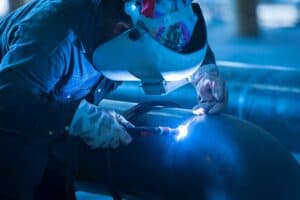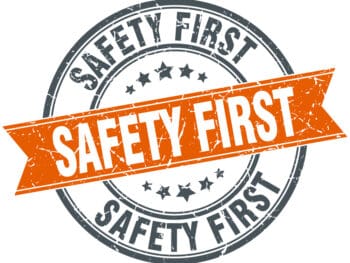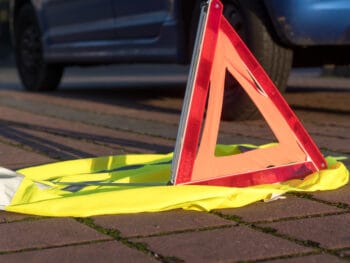
“That Will Never Happen At My Company” Is The Wrong Thinking
What if you have no real safety program, or no loss control techniques? Well, to be blunt, you are just waiting for the next injury to occur. Why would any company want to wait around for the next injury to happen? Most employers think that the worst injuries will never occur at their plant because everyone uses their heads when working and everyone practices using proper safety when operating machinery. This is far from the truth.
The truth is, risk of injury is everywhere at every moment of the day. Each worker has the responsibility of operating safely. Unfortunately, this is not the way it works. Workers get caught in their routines, and their attention can get diverted away from what they are doing at the current time. This distraction can, and will, lead to injury.
Also to blame are poor training programs. If you have a lot of new hires, they may start off learning bad habits from their veteran employees that are training them.
But the new hires are not the only ones to blame. Veteran workers can also become injured because they pay less attention to their work routines. They think because they have worked there a long time and know the machinery that they can get away with more. Examples such as removing machine guarding, improperly using machines, or not wearing safety equipment are usually to blame. These are easy corrections to a widespread problem.
So if this is the case, who is policing the veterans to make sure they are performing the jobs the proper way? Are the supervisors on the floor enforcing safety each day? Are there disciplinary measures in force for those that break the rules? If so, are these measures always enforced or is it just some of the time? Does your supervisory program ever have any type of audit or follow-up to make sure management is actually supervising their workers or are they just babysitting them and turning the other way to keep production levels where they want them to be?
Worker Accountability is Key To Safety Success
Slip and fall injuries are very common. Who is in charge of making sure the carpets are in good shape? Who is in charge of making sure any fatigue mats in front of machines are free from wear and tear? Are workers falling in areas that they should not be in the first place? Why are they allowed in these areas? Who is in charge of being responsible for these areas? If your answer is that you do not know, then you have a problem.
Are any management personnel soliciting feedback from the employees that are working these jobs each day for hours and hours, week after week? What are their thoughts on how you can perform each job in a safer manner? One of your best resources for safety is your employees. Sure can be great to bring in an outside expert to review each job and comment on how they could be performed better and in a safer manner. However, if you are not soliciting feedback from your staff, then you are missing out on a great opportunity for safety ideas.
Worker accountability is key. Each worker has a duty to perform. Each supervisor has a duty to supervise and enforce rules. Each safety person appointed to that position has a duty to review tasks and implement safety measures. Why has accountability been pushed to the side?
Consider Indirect Cost of Workers Comp When Evaluating Bottom Line
In my experience, worker accountability, responsibility, and safety are often pushed aside due to production demands. The focus is on the bottom line, and on quality, rather than on safety. Everyone turns a blind eye to hidden indirect costs of injuries. If you have a few injured workers, other workers must pick up their slack. This hurts their production and the production of the work floor as a whole. More corners then get cut to keep up with production demands.
It is the classic iceberg effect. Executives see work comp claim costs only at the surface. They see the medical and wage loss expenses as the only “expense” of a work comp claim. The indirect costs hidden under the surface are so much worse. Decreased production, increased strain on remaining workforce, decreased morale, increased hazards, increased shortcuts, decreased quality, etc. All of these have a larger cost to the company as a whole rather than just medical and wage loss expense.
When you are thinking about your safety program and accountability, think of the hidden costs beneath the surface. A proper guard on a machine could cost $10,000, but what are the costs to someone being injured because the guard is not there? Chances are, that cost is going to be 10x more expensive.

Contact: mstack@reduceyourworkerscomp.com.
Workers’ Comp Roundup Blog: https://blog.reduceyourworkerscomp.com/
©2019 Amaxx LLC. All rights reserved under International Copyright Law.
Do not use this information without independent verification. All state laws vary. You should consult with your insurance broker, attorney, or qualified professional.






